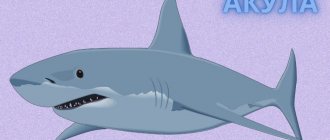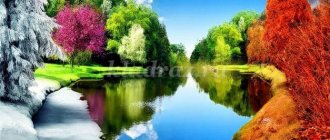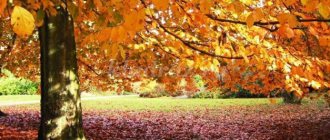Lesson summary “Our planet Earth”
Lesson summary on the topic: “Our planet Earth.”
Author: Bystrova V.V. – teacher
Child Development Center "Skazka"
r.p. Red Buckies
2017
Goals:
- To give children an idea that planet Earth is a huge ball, that it is very large, that most of it is covered with water, there are continents - land; there are many living creatures on the planet, they need clean water, clean air, clean land to live; about environmental pollution.
— Develop a responsible attitude towards the environment.
— Cultivate a love for nature and respect for it.
Preparatory work:
Classes and conversations about planet Earth and the surrounding nature; about the place of man in nature; about human interaction with nature; about the need to preserve and protect nature. Reading poems, proverbs, sayings, riddles about nature. Drawing, applique, modeling.
Materials and equipment:
Map, globe, pointer.
Progress of the lesson:
Q: Good morning, dear children,
You are the most beautiful in the world!
D: (they say hello).
Q: Today, guys, we have a very amazing conversation! Sit back, I'll tell you something.
You and I live on a wonderful planet, it’s called...
D: Earth!
Q: Yes, that's right! What is it like, our Earth?
D: Beautiful, blue, big, unusual, etc.
Q: Imagine that you are astronauts flying in a rocket, what does our Earth look like in space?
The children are talking.
Q: Our planet is a huge, enormous ball; it takes many, many days, even months, to go around it.
Showing the globe.
Q: What is there on our planet?
Children's answers.
Q: First of all, there are two poles on our planet. What are their names?
Children's answers.
Q: One is northern, the other is southern. The northern one is on top of the globe, the southern one is below.
What else is there on our planet?
Children's answers.
Q: Most of the earth is covered with water - these are seas and oceans. Have you heard about them? Maybe you know what the seas and oceans are called?
Blue color on the globe represents water. What else is there on our planet?
The children answer.
Q: Among the oceans there are large areas of solid land - continents, land. This is the largest continent - Eurasia. This continent is located in the northern part of the globe, closer to the north pole. Here is another continent - Africa. Do you know anything about Africa?
Children's answers.
Q: Africa is located in the middle of the globe, a little closer to the south pole. Now I will show you a very interesting, long land, consisting of two parts. Both of them are connected by a narrow strip, similar to a thin neck. Does anyone know the name of this continent? This is America, guys. It consists of two parts: the upper one is North America, the lower one is South America. These continents stretch across the globe, from the north pole to the south.
Who knows what is at the poles of the globe?
Both poles are the coldest places on earth. There is no land at the North Pole, there is an ocean there, it is always covered with ice. That’s what it’s called – the Arctic Ocean. The south pole is even colder than the north pole. There is land there - the continent of Antarctica.
The last continent remains. It is the smallest - it is Australia. This continent, like a large island, is surrounded on all sides by the ocean.
Look carefully, guys, at our map, or at the globe. What does the globe look like? What is more on our planet Earth, water or land?
Children's answers
Q: Yes, there is much more water, oceans and seas. Who lives in the seas and oceans? Does anyone live on land? Who?
Children's reasoning
Q: Of course, on all continents there are a lot of living beings: plants grow, large and small animals and people live. Many different peoples live on all continents. Only one landmass is uninhabited - Antarctica. Due to the extreme cold, plants do not grow there, and people do not live there permanently either. Only a few animals live in coastal ocean waters.
Q: If the seas and oceans are depicted in blue, then the land, where it is always covered with snow, is white. Wherever it is not too cold and not too hot, many green plants grow, which is why most of the land is depicted in green.
The middle part of the globe is very hot all year round. Is it hot or cold in Africa?
Children answer
B: Yes, it is very hot there. Africa has many deserts covered with sand, practically no water and very few plants. That's why most of Africa is shaded yellow. The south of North America is also full of deserts.
Now you and I know where the poles are on the globe, where the continents are, and where the water is - oceans and seas. This is how colorful our Earth is!
Physical education minute
Q: Where on Earth do you and I live? Where is our continent, where is the place on it that our village occupies? What is it called?
Children's answers
What is the name of our state?
Our state, Russia, is located on this continent (shows on the map). Our country is large and takes up a lot of space on the map. Who knows what the main city in Russia is called?
Answers
That's right, Moscow, look where it is. And here is our village.
Q: Now, guys, I’ll tell you the most important thing! Our planet Earth is in danger! There are many sore spots on it. This happened because people built many plants and factories, power plants, nuclear power plants. These enterprises pollute the air - it is polluted by the smoke that comes out of the chimneys into the sky, and gases from cars. Waste from factories is discharged into rivers and seas and pollutes them; oil from tankers spills into the waters of the seas and oceans during accidents. This is how our planet Earth is polluted, and from this pollution animals and plants die, people get sick. Nature is dying! Our planet Earth is in danger, it must be saved through common efforts.
How can you and I help our planet?
Children's reasoning
To help, you need to learn to love nature, to love it from childhood. Learn to understand how all living beings live: birds, bugs, animals, flowers, blades of grass. This is done by people called ecologists. Do you want to become little ecologists?
Then you and I will try to preserve and protect nature, help living beings, and do good deeds.
I will now show you two places in our country that need to be saved. Far away in Siberia there is Lake Baikal. This is a very beautiful lake. Now it is polluted. People not only in our country, but also in other countries are thinking about how to save it. Look where it is on the globe. Still far from us in the south of our country there is the Aral Sea. There is another problem with it, the water in it becomes less and less every year, it dries out. Now people are also thinking about how to save him.
Do you think our village is in danger?
Q: The biggest problem in our village is garbage! Yes, guys, you noticed correctly, garbage is everywhere, in the forest, on the banks of springs, rivers, near houses.
Guys, please talk to your parents, what is threatening our village and how can we help it?
Children ask questions
Q: You know, guys, I watched you during our lesson and realized that you were very interested in this topic. I will be glad to go with you on a great journey around our planet Earth, and we will answer your main questions: “Why is our planet Earth called the globe?” and “What to do with garbage?” Goodbye, see you again.
Notes for children in the preparatory school group Topic: “Blue Planet”
Transcript
1 Municipal autonomous preschool educational institution of the city of Nizhnevartovsk, kindergarten 15 “Sun” Notes for children in the preparatory group for school Topic: “Blue Planet” Senior teacher: Andreeva Natalya Vasilievna Nizhnevartovsk 2014
2 Program content: Consider with children the location of planet Earth in the Universe. Look at the areas of water and land on the globe. To promote the accumulation in children of specific ideas about the properties, forms and types of water and living organisms living in water and near water. Develop speech, thinking, curiosity. Teach children to draw conclusions and conclusions. Foster curiosity and interest in experimental activities.
3 Preliminary work: Consultations for parents: “How to teach children to preserve wildlife and not pollute it”, “Educating preschoolers’ need for clean water and clean air” Creation of albums “Blue Planet” Creation of a layout “Solar Constellation” Exhibition of drawings “Earth” my home is my home." Conducting a series of experiments with water.
4 Equipment: TV for watching videos. Film on electronic media “Constellation”. Globe. Cube, ball, flasks of various shapes, saucer. Glass of milk, glass of water, illustration of water. Sugar, salt, citric acid, vegetable oil. Two microscopes with clean water and melted snow, a funnel, cotton pads, a scarf, coal. Operational cards. Didactic game "Ecological Lotto". Droplets made of colored paper (for awards)
5 Methodological techniques Watching a video about planet Earth. Looking at the globe. Looking at a world map. Experimenting to determine water clarity. Experiment on solubility in water. Working with operational maps. Use of artistic words. Didactic game, search questions. Encouraging children.
6 Children are invited to watch a video about the location of our planet Earth in the universe. Goal: To reinforce with children the difference between our planet and other planets (color, distance, size) -What did you like and remember most from this film? — Why do you think our planet is called “blue”? -What shape does our planet appear from space? -Where is it located in the solar system? -Are all planets the same size?
7 (Children sit on chairs in a semicircle) The teacher brings in a globe Purpose: To consolidate children’s ideas about the shape of the earth. - What is in front of you? - Why do you think there is so much blue on the globe? - What color is the land indicated by? - What color is there more on the globe? -So, what conclusion can be drawn from this? — Name the existing bodies of water. — Do you think the water in all reservoirs tastes the same? — Which bodies of water have salt water, and which ones have fresh water?
8 Experiment 1 “Does water have a shape” Purpose: To consolidate children’s knowledge that water has no shape. (Children pour water into various shapes of flasks and saucers). Consider the operational map diagram. The form that water takes changes all the time. Conclusion: water has no form.
9 Physical exercise “We went down to the fast river”
10 Experiment 2 “Does water have color” Purpose: To consolidate children’s knowledge about whether water has color. (Take two glasses: one with water, the other with milk. Color pictures are placed behind the glasses). Conclusion: The pattern is visible through water, but not through milk. Clear water can be made opaque. To do this, you need to wet the brush and dip the paint into it. Add paint little by little, observing how the transparency of the water changes. Look through it at the picture. the drawing is not visible. And so, we conclude that water is a transparent liquid.
11 Experiment 3 “Water is a solvent” Purpose: To consolidate children’s knowledge about the properties of water. -Does water have a taste? (Children stir sugar, salt, citric acid in water. After the substances dissolved, the children tasted the water). -What happened to the substances that were put into the water? -Now let's try to dissolve flour and sunflower oil in water. Conclusion: not all substances dissolve in water.
12 Experiment 4 “Is all the water safe to drink?” (The teacher invites the children to look through microscopes. One microscope is charged with tap water, the other with melted snow). Goal: To reinforce with children the knowledge that not all water can be drunk; that dirty water can harm the body. -What did you see in the microscope? -What is a drop of pure water under a microscope? -What drop of melted snow? -What is the difference? Conclusion: not all water is drinkable.
13 Creating a filter for water purification The teacher, together with the children, assembles two filters: - a two-stage filter from cotton pads and coal; -a filter made of cotton pads and a handkerchief. Goal: to teach children to independently assemble filters for water purification in camping and extreme conditions.
14 Didactic game “Ecological Lotto” Purpose of the game: To consolidate ideas about the flora and fauna that live in forests, rivers, lakes and swamps of the city of Nizhnevartovsk and the region.
15 Summary of the lesson Guys, what new did you learn in the lesson? — What struck and interested you most? — What can you tell your parents and friends about? —What else would you like to know? — What needs to be done to ensure that our Earth remains blue and clean for a long time? Let's hold hands tightly and say: - They teach us to be kinder, To love birds, animals, flowers, To purify the air and water, To preserve and protect nature! At the end of the lesson, the teacher gives all children a drawn drop as a sign of knowledge.
16 Thank you for your attention!




